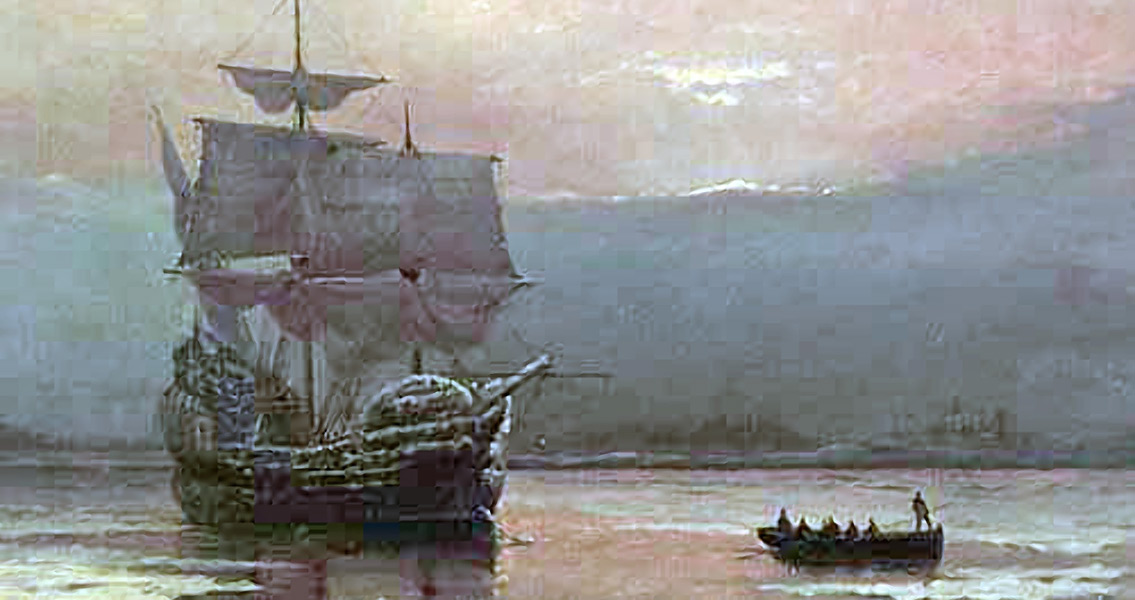<![CDATA[This week marks the anniversary of the Mayflower's arrival in what is now Plymouth, Massachusetts. The arrival of the the pilgrims was the first step in what has evolved through the centuries into the traditions of the Thanksgiving Holiday. Just as importantly, their journey has become the archetypal story of disillusioned Europeans migrating to North America in search of a better life, a narrative intrinsic to the history of the modern United States. The story originates in the doctrinal differences which divided Europe in the sixteenth and seventeenth centuries. The pilgrims, who actually referred to themselves as 'Saints', were a sect of Protestant reformers from the town of Scrooby in Nottinghamshire. They had become disillusioned with the state sanctioned Church of England, believing it to have descended into the very same idolatry and corruption they criticised in the Catholic Church. Forming their own church in the small village, the pilgrims soon found the Church of England's similarities to the Catholic stretched to an intolerance of dissent. Rather than heresy the pilgrims were accused of treason, a consequence of the body of the church being tied in with that of the monarch and state. In 1606 they fled England, heading for the more tolerant Netherlands. Settling in the town of Leyden, they found the freedom they'd desired, but soon encountered problems of a more secular nature. The same tolerance that gave the pilgrims freedom to worship also extended into Dutch society, making it a much more cosmopolitan and liberal one than the group from Scrooby were used to. The older generation became concerned that their children were being seduced away from their austere religion into a life of debauchery. On a more practical level, Dutch crafts guilds did not admit foreigners, meaning the pilgrims were restricted to working menial, low paid jobs. Disillusioned, the pilgrims decided to move again. Looking for a place which was free from government interference - tolerant but free of worldly distraction - they soon realised that they had to leave Europe, to the 'New World' across the Atlantic Ocean. Awarded a piece of land on which they could establish a colony by the Virginia Company, and given permission by the King of England to leave the Church of England, the pilgrims made plans to leave Europe. On 6th September, 1620, 102 passengers crammed onto the Mayflower and set sail for North America. After several scouting parties went to the mainland to find a suitable area for a colony, it was agreed on 10th December that a harbour on the west of Cape Cod - what is now known as Plymouth Harbour - would be the perfect location. Before disembarking from the ship, 41 male heads of family agreed to the Mayflower Compact, swearing their submission to a government created by the colonist's consent and promising to obey all laws issued in the new colony. Bad weather prevented the pilgrims from going ashore for several days, but on the 18th December they finally anchored in Plymouth Harbour and set foot on North American soil. After carrying out some exploration, they soon settled on an area that had once been inhabited by the Wampanoag tribe but abandoned following an outbreak of disease. The rest of the story of the pilgrims is well told. Enduring difficulty they eventually established the colony, aided by North America's indigenous populations. Over the coming years more Europeans would head to the new colony in Massachusetts, hoping to build a new life away from the confines of the Old World. The Mayflower pilgrims were far from the first European settlers in North American, but their story has become synonymous with the image of the USA as a land of opportunity and freedom.]]>
Mayflower Pilgrims Reach Plymouth Harbour
